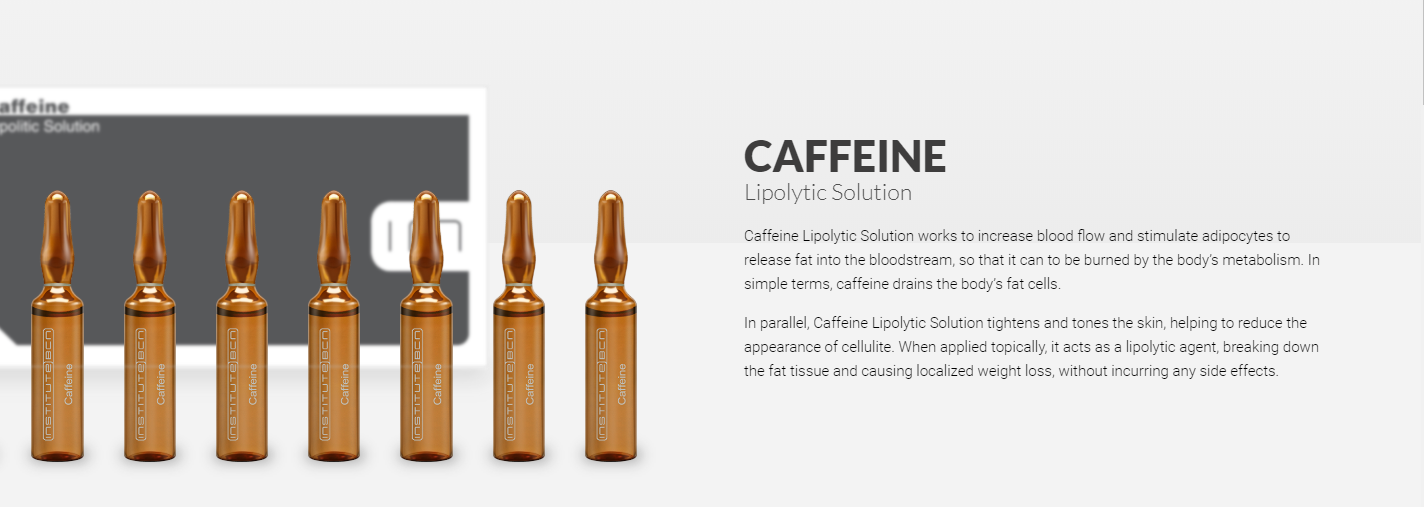REGENERATIVE SOLUTION
Caffeine is an alkaloid. An alkaloid is defined as any of various nitrogen containing organic bases obtained from plants. Caffeine is one of three types of alkaloids, the others being theophylline and theobromine, found in coffee, tea, cola nuts, cacao beans, mate and guarana. These compounds are methyl xanthines, have different biochemical effects.
Caffeine has a stimulant effect and increases the mobilization of free fatty acids in the blood stream. Caffeine is able to stimulate cell metabolism and specifically promotes the hydrolysis of triglycerides into free fatty acids and glycerol, thus reducing adipose storages. This is particularly useful in the cellulitis phenomenon where, due to an alteration of the microcirculation, adipocytes are stimulated to synthesize and accumulate higher amounts of triglycerides resulting in an increase of the cell size. Caffeine increases lipolysis by inhibiting the cyclic nucleotide phosphodiesterase, which is responsible for catalyzing the conversion of cyclic AMP to AMP. The resulting high tissue concentrations of cyclic AMP activate inactive hormone-sensitive lipase and promote lipolysis.
It has also a diuretic effect, which helps to control the liquid retention associated to cellulitis. Caffeine acts to drain the fat cells, tightens and tones the skin and helps to reduce the appearance of cellulite even more. The diuretic action helps to remove water from fat cells, thereby reducing their size.
|









